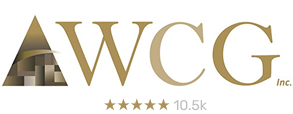
Business Advisory Services
Everything you need to help you launch your new business entity from business entity selection to multiple-entity business structures.
Hey - Our site just had a makeover and we are sorting through the hiccups!
Hey - Our site just had a makeover and we are sorting through the hiccups!

Everything you need to help you launch your new business entity from business entity selection to multiple-entity business structures.

Designed for rental property owners where WCG CPAs & Advisors supports you as your real estate CPA.

Everything you need from tax return preparation for your small business to your rental to your corporation is here.

WCG’s primary objective is to help you to feel comfortable about engaging with us
Table Of Contents


Further Consolidated Appropriations Act was approved by the House on December 17, 2019 by a vote of 297 to 120 and by the Senate on December 19, 2019 by a vote of 71-23.
What do these Acts impact? Retirement, especially Solo 401k plans, ROBS 401k plans, IRAs and kiddie taxes. It does some really cool things for small business owners, parents and those who work beyond 70. FCAA also addresses private mortgage insurance and health insurance expenses among other issues.
Let’s hit on the SECURE Act first. You can download a copy from the House Committee on Ways and Means here. Not all Sections are discussed here.
The calculation is now the greater… read that again… the greater of $500 or $250 x the number of non-highly compensated employees (HCEs) for a maximum of $5,000. The credit applies for 3 years. Section 104 also provides for an additional $500 for automatic enrollment.
So, if you have 8 people working for you, and you start a 401k plan (here is our referrals for 401k plans) then your credit is the greater of $500 or $2,000. Nice!
At 70 ½ you could no longer contribute to an IRA. The SECURE Act repeals that entirely. They might put an age back on it, but for now it is wide-open. Frankly this makes sense… the IRS wanted you to start taking money out of your IRA so they could tax it, but at the same time people are living longer and working longer. The IRS will get their money eventually (see the end of the stretch IRA below).
This will also increase the attractiveness of backdoor Roth conversions (dump money into an IRA and then convert it).
This is huge. Part-time workers are the backbone of a lot of industries. Tax accounting firms, for example, need part-time people to swell during busy times. United Parcel Service has used part-time employees to load and unload packages for just a few hours a day since that was “go time.” Great for college students who could get up at 4:00AM.
Statistically more women work part-time than men, and the old rules limited how woman could save for retirement. The SECURE Act fixes that. The eligibility is one year of 1,000 hours or three consecutive years of 500 hours, or more. Employers may also exclude part-time workers from plan testing in certain situations which is also helpful.
This is cool. We have exceptions for higher education, medical exceptions and first-time home buyers… why not parents? The wording is weird since it reads “Retirement Plans” and IRAs are not technically retirement plans… they are arrangements (accounts). But, the language in the law mentions IRAs in the subtext so that’s good. The maximum amount is $5,000.
As mentioned before, the IRS wants their money. The theory was people needed to take required minimum distributions (RMDs) which was generally a taxable event… this prevents (or at least limits) the transfer of wealth using IRAs for estate planning purposes. So the SECURE Act increases the age to 72.
This also affects solo 401k plans and ROBS 401k plans. What the heck is a ROBS 401k? It stands for Rollover as Business Startup… and it allows new business owners to use a previous employer 401k plan to fund the new business.
You can see other small business and self-employed retirement options here-

Click here to maximize your 401k with options like profit sharing or cash balance plans effortlessly.
This is huge! Super huge! Businesses may adopt plans such as 401k plans before the due date of the business entity tax return, including extensions, and the plan will be treated as in existence for the prior year. No more scrambling in December trying to get a bunch of solo 401k plans set up. And! Many business owners don’t necessarily know what amount cash they can safely separate with until well into the following year.
The only snag we see is employee deferrals. If it is March 15, 2020, and you want to defer $19,000 for 2019 you would need to amend your payroll filings such as W-2s for 2019 (unless the $19,000 is a Roth or post-tax contribution). This leaves only the employer side which is limited to 25% of W-2 compensation.
Schedule C taxpayers don’t appear to have this limit / snag since they do not process payroll and W-2s on themselves.
529 plans expanded to include apprenticeships and homeschooling, and provisions to use 529 plan funds to pay for student loans.
No more stretch IRAs. Under this section, distributions from inherited IRAs to individuals other than spouses must be fully distributed in 10 years. There are some exceptions and other issues such as disabled individuals and minors, but that is the general gist.
So, this is the yang. We had the ying with RMDs starting at 72 and being able to contribute to an IRA past the age of 70 ½… those were great things. The 10-year, no more stretch IRA rule is the yang. Ah, life… the great equalizer.
The Tax Cuts and Jobs Act changed the taxation of unearned income for children to essentially be trust tax rates. The problem with trust tax rates is that they are very compressed, and you reach the highest tax rate of 37% very quickly (at $12,500 in income). According to savingforcollege.com, “This significantly increased the tax rates that apply to the taxable portion of college grants, scholarships and fellowships and to military survivor benefits of Gold Star families. It also caused low- and middle-income children to be taxed at much higher rates than their parents.” Yuck!
SECURE Act repeals the kiddie tax back to pre-TCJA, and it allows taxpayers for 2018 (yes, way retro) and 2019 to select the lower tax rate (the parent’s rate versus the TCJA rates). For 2018 tax returns, children will need to amend their tax returns to take advantage of this.
The FCAA extended the following (which always seem to sunset and then get resurrected)-
FCAA also repealed-
FCAA also allows individuals who had losses in qualified disaster areas to withdraw up to $100,000 from retirement plans without being subject to the 10% early withdrawal penalty. Wait! There’s more. You can pay it back during a three-year period, and you can also spread the income tax hit over three years. Remember, this is a penalty-free withdrawal, not an income tax-free withdrawal.
A law enhancing retirement plan options, IRA contributions, and benefits for small businesses.
Anyone over 70½ who wants to continue saving for retirement.
Long-term part-time employees can now join 401(k) plans.
Yes, up to $5,000 penalty-free from retirement accounts.
Beneficiaries (non-spouses) must fully distribute inherited IRAs within 10 years.
Funds can now pay for apprenticeships, homeschooling, and student loans.
Reverted to pre-TCJA rules, potentially lowering taxes for children’s unearned income.
Relief for private mortgage insurance, qualified tuition, energy-efficient homes, and medical expense thresholds.
Medical device tax and high-cost employer health plan (Cadillac) tax.
Yes, up to $100,000 penalty-free, with three-year repayment and tax-spreading options.

Want to talk to us about tax return preparation, tax planning and strategy, and all the other things that go with it? We are eager to assist! The button below takes you to our Getting Started webpage, but if you want to talk first, please give us a call at 719-387-9800 or schedule an discovery meeting.
Jason Watson, CPA is a Partner and the CEO of WCG CPAs & Advisors, a boutique consultation and tax preparation CPA firm serving clients nationwide with 7 partners and over 90 tax and accounting professionals specializing in small business owners and real estate investors located in Colorado Springs.
He is the author of Taxpayer’s Comprehensive Guide on LLC’s and S Corps and I Just Got a Rental, What Do I Do? which are available online and from mostly average retailers.
Table Of Contents

Tax planning season is here! Let's schedule a time to review tax reduction strategies and generate a mock tax return.

Tired of maintaining your own books? Seems like a chore to offload?
Did you want to chat about this? Do you have questions about us? Let’s chat!
The tax advisors, business consultants and rental property experts at WCG CPAs & Advisors are not salespeople; we are not putting lipstick on a pig expecting you to love it. Our job remains being professionally detached, giving you information and letting you decide within our ethical guidelines and your risk profiles.
We see far too many crazy schemes and half-baked ideas from attorneys and wealth managers. In some cases, they are good ideas. In most cases, all the entities, layering and mixed ownership is only the illusion of precision. As Chris Rock says, just because you can drive your car with your feet doesn’t make it a good idea. In other words, let’s not automatically convert “you can” into “you must.”
Let’s chat so you can be smart about it.
We typically schedule a 20-minute complimentary quick chat with one of our Partners or our amazing Senior Tax Professionals to determine if we are a good fit for each other, and how an engagement with our team looks. Tax returns only? Business advisory? Tax strategy and planning? Rental property support?

Everything you need to help you launch your new business entity from business entity selection to multiple-entity business structures.

Designed for rental property owners where WCG CPAs & Advisors supports you as your real estate CPA.

Everything you need from tax return preparation for your small business to your rental to your corporation is here.

WCG’s primary objective is to help you to feel comfortable about engaging with us

